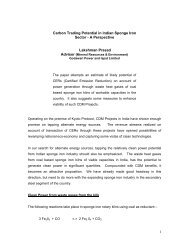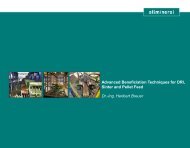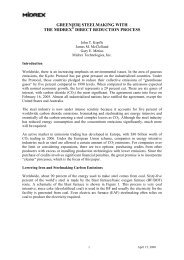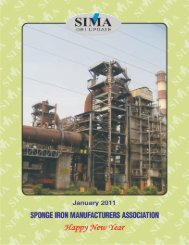You also want an ePaper? Increase the reach of your titles
YUMPU automatically turns print PDFs into web optimized ePapers that Google loves.
GAS SCENERIO IN INDIA<br />
G P AGGARWAL<br />
Head International Trade & Business Development<br />
Essar Oil Limited Mumbai<br />
Natural gas has been rightly termed as the fuel of<br />
21 st century. Presently Natural gas, accounting for<br />
24 percent of total global primary energy supply, is<br />
the third largest contributor to the global energy<br />
basket and is projected to increase at an average<br />
rate of 2.4 percent per year from 2003 to 2030 as<br />
per EIA, which will be faster than any other energy<br />
source. During the last 5 year the global gas markets<br />
are fast integrating, commercial models are<br />
undergoing rapid changes, and market structures<br />
are evolving and fast changing. Leading this growth<br />
in global gas sector are the Asian markets with<br />
special investment focus on countries like China and<br />
India.<br />
With the advent of LNG and progressive de-control<br />
of gas prices, the natural gas sector in India has<br />
Hydrocarbon Reserve Position (Natural Gas)<br />
progressed and achieved some degree of maturity.<br />
Current natural gas policy dispensations have<br />
created numerous challenges for the gas sector.<br />
Major among them are the demands of competing<br />
consumers industries, ensuring competition and<br />
open access in the pipeline transportation and<br />
distribution networks, reducing the supply demand<br />
gap that exists today. The rapid growth of the Indian<br />
economy in the xth Plan (2002-<strong>2007</strong>) has greatly<br />
contributed to the development of the Indian energy<br />
sector as a whole and provided a major trigger for<br />
the growth of the gas sector as well. While gas<br />
occupies only about 9-10 percent of the total energy<br />
basket, primarily due to supply constraints all these<br />
years, the scenario is fast changing.<br />
As on 1.4.2006 the total prognosticated reserve, ultimate reserve and balance recoverable reserves of gas<br />
of the country have been estimated as under:<br />
Initial Place Ultimate Reserves Recoverable Reserves<br />
(MMT) (MMT) (MMT)<br />
ONGC 1688.32 942.28 523.01<br />
OIL 251.00 170.00 110.00<br />
Pvt/JV 933.59 511.76 466.94<br />
Total 2872.91 1624.04 1099.95<br />
Gas Infrastructure<br />
� On supply side, there are two LNG terminals at<br />
Dahej and Hazira in Gujarat with a total capacity<br />
of 7.5 MMTPA and are operating. The third<br />
terminal in Dabhol with a capacity of 5.0 MMTPA<br />
is likely to be commissioned shortly. There is plan<br />
for another terminal at Kochi and Mangalore<br />
which are taking a final shape for implementation.<br />
� In term of transmission pipelines, there is an<br />
existing network of 6300 km including the Hazira-<br />
Vijaipur-Jagdishpur pipeline and other regional<br />
networks. A number of pipelines, including those<br />
by the private sector are at various stage of<br />
implementation.<br />
� From coverage of just 2 cities at the beginning<br />
of Xth Plan (2002-07), the city gas coverage has<br />
grown to10 in 2005-06 across the western,<br />
northern and southern regions of the country.<br />
Currently there is a total city gas distribution<br />
network of about 6000 km. As far as CNG<br />
supplies are concerned, there are 278 stations<br />
dispensing CNG in the country and number is<br />
expected to continuously grow in coming years.<br />
MAY-<strong>2007</strong>/13










